Results 6,151 to 6,160 of 12094
Thread: Anandtech News
-
07-22-16, 12:05 AM #6151
Anandtech: NVIDIA Announces “NVIDIA Titan X” Video Card: $1200, Available August 2nd
In 2014/2015, it took NVIDIA 6 months from the launch of the Maxwell 2 architecture to get GTX Titan X out the door. All things considered, that was a fast turnaround for a new architecture. However now that we’re the Pascal generation, it turns out NVIDIA is in the mood to set a speed record, and in more ways than one.
Announced this evening by Jen-Hsun Huang at an engagement at Stanford University is the NVIDIA Titan X, NVIDIA’s new flagship video card. Based on the company’s new GP102 GPU, it’s launching in less than two weeks, on August 2nd.
More...
-
07-22-16, 08:52 AM #6152
Anandtech: Battle of The CPU Stock Coolers! 7x Intel vs 5x AMD, plus an EVO 212
End users need to be aware of the performance of their current cooling solutions in order to reasonably assess the upgrade that will fit their needs. In this review we will showcase the thermal performance of some popular stock CPU coolers, including the controversial aftermarket Intel BXTS15A and the highly touted AMD Wraith, marketed as offering 125W of near-silent cooling and the equivalent of a $30 freebie. We also included one of the most popular mainstream coolers available, the Cooler Master EVO 212, as a baseline comparison against aftermarket solutions.
More...
-
07-22-16, 08:52 AM #6153
Anandtech: SAPPHIRE Announces NITRO+ Radeon RX 480
This morning SAPPHIRE is announcing their latest card in the NITRO+ family, the NITRO+ Radeon RX 480. Some key features of SAPPHIRE’s new NITRO+ RX 480 cards include higher clock speeds, an improved cooler with a back plate included, and software fan health monitoring. Along with this we’ll also get RGB lighting and power delivery that is improved over what we saw on the reference RX 480.
The cooler is improved from SAPPHIREs last generation with two 95mm dual-ball bearing fans. Meaning longer fan life and potentially quieter operation. In fact, SAPPHIRE isn’t content simply improving the quality of their fans. They also are including a feature called “Fan Check” in their upcoming SAPPHIRE TriXX 3.0. Fan Check allows users to check the health of their fans and if an issue is detected they can contact customer support for a replacement fan. Thanks to quick swap fans the user can replace just the fan with a single screw, no more need to return a whole card for a dead fan, and no more need to disassemble a card to remove the fan. I think this sounds like a neat feature, but considering the use of dual ball bearing fans and that the fans shut off when temperatures are under 52 degrees Celsius, I won’t be surprised if the number of users needing replacements is rather low.
It has occured to me that you can’t throw a dart without hitting an RGB LED card anymore. Regardless it does come in handy when color coordinating a build. Along with having the usual option to control the RGB lighting through SAPPHIRE’s utility, there is also a hardware controlled red button on the back of the card which will let one work through the various included modes such as fan speed or GPU temperature modes.
We will be seeing factory overclocks from both the 8GB and 4GB versions of this card. While base clocks are presumably higher they were not shared, though the boost clocks come out to 6% and about 3% over AMD's reference cards respectively. The memory clocks are right in line with the reference Radeon RX 480 8GB and 4GB cards.Radeon RX 480 Specification Comparison SAPPHIRE NITRO+ Radeon RX 480 8GB SAPPHIRE NITRO+ Radeon RX 480 4GBAMD Radeon RX 480 8GBAMD Radeon RX 480 4GBBoost Clock 1342MHz 1306MHz 1266MHz Memory Clock 8Gbps GDDR5 7Gbps GDDR5 8Gbps GDDR5 7Gbps GDDR5 VRAM 8GB 4GB 8GB 4GB Launch Date Next Week 6/29/2016 Launch Price $269 $219 $239 $199
For those that enjoy running on overclocked hardware the NITRO+ Radeon RX 480 includes a NITRO Boost dual bios switch that further increases the boost clock and power limit for some extra performance. To help feed overclocking endeavors the card also comes with an 8-pin power connector and a new model of their own Black Diamond Chokes which they profess drop coil temperatures by another 15%.
Amusingly, with the increasing growth in VR this generation having multiple HDMI outputs is becoming a highlighted feature all around. Following suit, we can find dual HDMI on the business end of the NITRO+ Radeon RX 480 sharing space with two DisplayPort connectors and a DVI-D port.
Finally, for pricing the SAPPHIRE NITRO+ Radeon RX 480 will be listed at $269 for the 8GB card and $219 for the 4GB model, a $30 and $20 premium over the reference models, respectively. So far the NITRO+ RX 480 appears to be a robustly built card with all the bells and whistles we’re seeing this generation including RGB lighting, fan shutoff, and warranty fan replacement while they were at it. Exact release dates have not yet been revealed, but those interested in these cards will find them available from etailers next week.
More...
-
07-22-16, 09:26 AM #6154
Anandtech: Samsung’s SSD 850 EVO 4 TB Now Available from Major Retailers
Samsung quietly added its 4 TB 850 EVO SSD model to the product to the lineup back in May (according to its own datasheet) without making any formal announcements. Earlier this month the company lifted the embargo on reviews of the product (you can read ours here) and began to ship the high-capacity SSD to its partners. By now, all the major retailers already either have the product in stock, or are taking pre-orders with ETA about a week from today, at a US MSRP of $1499.
The Samsung SSD 850 EVO 4 TB (MZ-75E4T0) comes in a 2.5”/7 mm form-factor with SATA interface and is based on the company’s TLC V-NAND memory (3D, 32-layers). The 850 EVO 4 TB drive is based on the MHX controller and is equipped with 4 GB of LPDDR3 cache (previously we were told we knew about the MHX ASIC supported 2GB max, which is interesting). Like the rest members of the 850 EVO family, the 4 TB model fully supports 256-bit full disk encryption that is compatible with the TCG/Opal 2.0 and IEEE1667 specifications, which is important for workstation users.
As for performance, the Samsung 850 EVO 4 TB drive resembles other higher-end models in the 850 EVO family. The manufacturer declares maximum sequential read speed of 540 MB/s as well as maximum sequential write speed of 520 MB/s for the SSD. As for random performance, the drive delivers a top speed of 98,000/90,000 4K random read/write IOPS. Maximum power consumption of the drive is 3.1 W/3.6 W during active read/write operations, which is also in line with the rest of the high-end 850 EVO SSDs.Samsung SSD 850 EVO Specifications Capacity 120 GB 250 GB 500 GB 1 TB 2 TB 4 TB Controller MGX MEX MHX NAND Samsung 32-layer 128 Gbit TLC V-NAND DRAM 256 MB 512 MB 1 GB 2 GB 4 GB Sequential Read 540 MB/s Sequential Write 520 MB/s 4KB Random Read 94K IOPS 97K IOPS 98K IOPS 4KB Random Write 88K IOPS 88K IOPS 90K IOPS DevSleep Power 2 mW 2 mW 2 mW 4 mW 5 mW 10 mW Slumber Power 50mW 60mW unknown Active Power (Read/Write) Max 3.7W / 4.4W 3.7W / 4.7W 3.1W / 3.6W Encryption AES-256, TCG Opal 2.0, IEEE-1667 (eDrive) Endurance 75 TB 150 TB 300 TB Warranty Five years
Right now, virtually all the biggest retailers in the world already have the Samsung 850 EVO 4 TB in stock, or, at least, list the drive and take pre-orders. We could say that the highest-capacity consumer-class SSD is now widely available, however, we should note that in many stores the first batch was sold out immediately and some only have several units left.
Buy Samsung 850 EVO 4 TB SSD on Amazon.com
The Samsung EVO SSD with 4 TB capacity has MSRP of $1,499 in the US, and the high price indicates that this remains a prosumer play at this point. At $1,499, the price is over two times higher than the 2 TB 850 EVO model ($675.76 at Newegg), indicating a higher cost per GB in exchange for density. Ultimately the product will likely find its buyer among those who need a large amount of solid-state storage (in 2.5"/7mm form-factor).Samsung SSD 850 EVO 4 TB (MZ-75E4T0B) Availability
As of 7/22 9amRetailer Country Local Price Price in USD In Stock Amazon U.S. $1,499 $1,499 July 31, 2016 B&H Photo Video U.S. $1,499 $1,499 Ships in 7-10 days CDW U.S. $1,648 $1,648 Yes Fry's Electronics U.S. $1,499 $1,499 August 1, 2016 Newegg U.S. $1,499 $1,499 July 31, 2016 NCIX Canada CAD $1,920 $1,468 Ships in 1-2 weeks Amazon UK U.K. £1,200 $1,570 July 30, 2016 Overclockers UK U.K. £1,200 $1,570 6 in stock Scan U.K. £1,283 $1,680 Yes Amazon DE Germany €1,299 $1,413 1 in stock Amazon ES Spain €1,605 $1,768 Yes Amazon FR France €1,502 $1,654 6 in stock Alternate Austria €1,399 $1,541 July 28, 2016 BA Computer Austria €1,391 $1,532 July 29, 2016 Bora Computer Germany €1,379 $1,519 5 in stock CaseKing Germany €1,480 $1,630 Yes CineMagic Denmark 10,782 kr $1,596 Yes Komplett Sweden 13,799 kr $1,598 Incoming Misco Sweden 11,382 kr $1,318 Yes
Other Options, Mainly for Enterprise
Typically SSDs of such capacity are designed for servers and datacenters and come with professional grade features which makes them even more expensive. For example, the SanDisk Optimus Max 4 TB (SAS) is available for $2,685 at Amazon and for $2,718 at Ebay. Likewise, Samsung’s own enterprise-grade PM863 3.84 TB SSD (SATA) has suggested price of $2,200, whereas its faster PM1633 3.84 TB (SAS) brother is sold for $3,092. Moreover, if you go to companies like Fixstars or Foremay, they build special-purpose SSDs for various non-PC applications. These products typically aren't even quoted for pricing, because they can feature different configurations and the order quantity affects the pricing, along with any support deal.
Nonetheless, when it comes to performance, capacity, endurance and price, the sky is the limit for solid-state storage. Multiple companies (including Samsung and Fixstars) now offer 2.5” SSDs with over 10 TB capacity and there are specialized solutions (such as those from HPE) that can easily cost $10,000 and north. In short, $1,499 may not be that expensive for a consumer drive.
More...
-
07-22-16, 10:40 AM #6155
Anandtech: G-Technology Introduces G-Drive and G-RAID External HDDs up to 20 TB
G-Technology this week introduced several new models of its G-Drive and G-RAID products with Thunderbolt 1, USB 3.0 or Thunderbolt 2 soltions. These are direct attached storage (DAS) devices, based on the latest hard drives featuring 10 TB capacity. The new DAS products aim to significantly increase performance and capacities of devices aimed at consumers and prosumers. The introduction of such storage solutions emphasizes that Western Digital (which owns the HGST and the G-Technology brands) is moving its helium-filled HDDs into the consumer space.
The first new G-Drive, with Thunderbolt 1 and USB 3.0, quotes a 10 TB capacity will give a maximum transfer rate of up to 245 MB/s, which is in line with the performance of the latest enterprise-class drives. In fact, the new product from G-Technology offers a combination of highest capacity and sustained transfer rate for a single-drive DAS in the industry. Officially, Western Digital only says that the new G-Drive is based on an enterprise-class HDD and does not confirm that the DAS utilizes the company’s flagship helium-filled HDD with 7200 RPM spindle speed (such as the HGST Ultrastar He10), but that is something logical to expect given the company’s portfolio of products.
The 10 TB capacity point will add a new member to the stack, with a $699.95 price point for the TB1 flagship G-Drive (using TB3 and USB 3.0). A USB 3.0 only version of the G-Drive 10 TB external HDD will also available for $599.95. The new 10 TB drives complement other G-Drive models with 3, 4, 6 and 8 TB of space.
[TABLE="width: 680"]
[TR="class: tgrey"]
[TD="colspan: 10"]G-Drive and G-RAID External Storage Devices[/TD]
[/TR]
[TR="class: tlblue"]
[TD="width: 150"]Product Line[/TD]
[TD="width: 110, colspan: 2"]Capacity[/TD]
[TD="width: 100"]Transfer Rate[/TD]
[TD="width: 100"]Interface[/TD]
[TD="width: 60"]SKU[/TD]
[TD="width: 55"]Model Number[/TD]
[TD="width: 60"]Price[/TD]
[/TR]
[TR]
[TD="colspan: 1, align: center"]G-Drive with Thunderbolt[/TD]
[TD="colspan: 2, align: center"]3 TB[/TD]
[TD="colspan: 1, align: center"]165 MB/s[/TD]
[TD="colspan: 1, align: center"]TB1
USB 3.0[/TD]
[TD="align: center"]0G03124[/TD]
[TD="colspan: 1, align: center"]GDRETHU3PB30001BDB[/TD]
[TD="align: center"]$299.95[/TD]
[/TR]
[TR]
[TD="colspan: 2, align: center"]4 TB[/TD]
[TD="align: center"]0G03050[/TD]
[TD="colspan: 1, align: center"]GDRETHPB40001BDB[/TD]
[TD="align: center"]$399.95[/TD]
[/TR]
[TR]
[TD="colspan: 2, align: center"]6 TB[/TD]
[TD="align: center"]226 MB/s[/TD]
[TD="align: center"]0G04023[/TD]
[TD="colspan: 1, align: center"]GDRETHU3PB60001BDB[/TD]
[TD="align: center"]$449.95[/TD]
[/TR]
[TR]
[TD="colspan: 2, align: center"]8 TB[/TD]
[TD="align: center"]205 MB/s[/TD]
[TD="align: center"]0G04996[/TD]
[TD="colspan: 1, align: center"]GDRETHU3NB80001BDB[/TD]
[TD="align: center"]$599.95[/TD]
[/TR]
[TR]
[TD="colspan: 2, align: center"]10 TB[/TD]
[TD="colspan: 1, align: center"]245 MB/s[/TD]
[TD="align: center"]0G05024[/TD]
[TD="colspan: 1, align: center"]GDRETHU3NB100001BDB[/TD]
[TD="align: center"]$699.95[/TD]
[/TR]
[TR]
[TD="colspan: 1, align: center"]G-Drive with USB[/TD]
[TD="colspan: 2, align: center"]2 TB[/TD]
[TD="colspan: 1, align: center"]165 MB/s[/TD]
[TD="colspan: 1, align: center"]USB 3.0[/TD]
[TD="align: center"]0G03902[/TD]
[TD="colspan: 1, align: center"]GDREU3G1PB20001BDB[/TD]
[TD="align: center"]$149.95[/TD]
[/TR]
[TR]
[TD="colspan: 2, align: center"]3 TB[/TD]
[TD="align: center"]0G03590[/TD]
[TD="colspan: 1, align: center"]GDREU3G1PB30001BDB[/TD]
[TD="align: center"]$179.95[/TD]
[/TR]
[TR]
[TD="colspan: 2, align: center"]4 TB[/TD]
[TD="align: center"]0G03594[/TD]
[TD="colspan: 1, align: center"]GDREU3G1PB40001BDB[/TD]
[TD="align: center"]$199.95[/TD]
[/TR]
[TR]
[TD="colspan: 2, align: center"]6 TB[/TD]
[TD="align: center"]226 MB/s[/TD]
[TD="align: center"]0G03674[/TD]
[TD="colspan: 1, align: center"]GDREU3G1PB60001BDB[/TD]
[TD="align: center"]$249.95[/TD]
[/TR]
[TR]
[TD="colspan: 2, align: center"]8 TB[/TD]
[TD="align: center"]205 MB/s[/TD]
[TD="align: center"]0G03906[/TD]
[TD="colspan: 1, align: center"]GDREU3G1PB80001BDB[/TD]
[TD="align: center"]$399.95[/TD]
[/TR]
[TR]
[TD="colspan: 2, align: center"]10 TB[/TD]
[TD="align: center"]245 MB/s[/TD]
[TD="align: center"]0G05016[/TD]
[TD="colspan: 1, align: center"]GDREU3G1PB100001BDB[/TD]
[TD="align: center"]$599.95[/TD]
[/TR]
[TR]
[TD="colspan: 1, align: center"]G-RAID with Thunderbolt 2[/TD]
[TD="colspan: 2, align: center"]8 TB[/TD]
[TD="align: center"]327 MB/s[/TD]
[TD="colspan: 1, align: center"]TB2
USB 3.0[/TD]
[TD="align: center"]0G04085[/TD]
[TD="colspan: 1, align: center"]GRARTH2NB80002BAB[/TD]
[TD="align: center"]$699.95[/TD]
[/TR]
[TR]
[TD="colspan: 2, align: center"]12 TB[/TD]
[TD="align: center"]unknown[/TD]
[TD="align: center"]0G04093[/TD]
[TD="colspan: 1, align: center"]GRARTH2NB120002BAB[/TD]
[TD="align: center"]$899.95[/TD]
[/TR]
[TR]
[TD="colspan: 2, align: center"]16 TB[/TD]
[TD="align: center"]
-
07-24-16, 11:09 PM #6156
Anandtech: Price Check Q3 2016: DRAM Prices Down Over 20% Since Early 2015
Slow sales in the first half of 2016 have negatively affected suppliers of virtually all of PCs, tablets and smartphone components. Producers of DRAM typically suffer more than others when it comes to pricing, since computer memory is considered a commodity and its quotes mostly depend on supply and demand rather than on technology advantages. Since early 2016, prices of DDR3 and DDR4 chips have declined by over 20%, according to DRAMeXchange (a division of TrendForce that tracks DRAM market). Despite the fact that it is slightly costlier to produce DDR4 memory because of slightly larger die sizes, at times the physical DDR4 modules can actually be cheaper than DDR3 ones.
More...
-
07-25-16, 03:52 PM #6157
Anandtech: NVIDIA Announces Quadro Pascal Family: Quadro P6000 & P5000
If there was one word to describe the launch of NVIDIA’s Pascal generation products, it’s “expedient.” On the consumer side of the business the company has launched 3 different GeForce cards and announced a fourth (Titan X), while on the HPC side the company has already launched their Tesla P100 accelerator, with the PCIe version due next quarter. With the company moving so quickly it was only a matter of time until a Quadro update was announced, and now today at SIGGRAPH 2016 the company is doing just that.
Being announced today are the two Quadro models that will fill out the high-end of the Quadro family, the P6000 and P5000. As hinted at by the name, these are based on NVIDIA’s latest Pascal generation GPUs., marking the introduction of Pascal to the Quadro family. And like NVIDIA’s consumer counterparts, these new cards should offer significant performance and feature upgrades over their Maxwell 2 based predecessors.
We will start, as always, at the top, with the Quadro P6000. As NVIDIA’s impending flagship Quadro card, this is based on the just-announced GP102 GPU. The direct successor to the GM200 used in the Quadro M6000, the GP102 mixes a larger number of SMs/CUDA cores and higher clockspeeds to significantly boost performance.NVIDIA Quadro Specification Comparison P6000 P5000 M6000 M5000 CUDA Cores 3840 2560 3072 2048 Texture Units 240? 160 192 128 ROPs 96? 64 96 64 Core Clock ? ? N/A N/A Boost Clock ? ? ~1140MHz ~1050MHz Memory Clock 9Gbps GDDR5X 9Gbps GDDR5X 6.6Gbps GDDR5 6.6Gbps GDDR5 Memory Bus Width 384-bit 256-bit 384-bit 258-bit VRAM 24GB 16GB 24GB 8GB FP64 1/32 FP32 1/32 FP32 1/32 FP32 1/32 FP32 TDP 250W 180W 250W 150W GPU GP102 GP104 GM200 GM204 Architecture Pascal Pascal Maxwell 2 Maxwell 2 Manufacturing Process TSMC 16nm TSMC 16nm TSMC 28nm TSMC 28nm Launch Date October 2016 October 2016 03/22/2016 08/11/2015 Launch Price (MSRP) TBD TBD $5000 $2000
Paired with P6000 is 24GB of GDDR5X memory, running at a conservative 9Gbps, for a total memory bandwidth of 432GB/sec. This is the same amount of memory as in the 24GB M6000 refresh launched this spring, so there’s no capacity boost at the top of NVIDIA’s lineup. But for customers who didn’t jump on the 24GB – which is likely a lot of them, including most 12GB M6000 owners – then this is a doubling (or more) of memory capacity compared to past Quadro cards. At this time the largest capacity GDDR5X memory chips we know of (8Gb), so this is as large of a capacity that P6000 can be built with at this time. Meanwhile this is so far the first and only Pascal card with GDDR5X to support ECC, with NVIDIA implementing an optional soft-ECC method for the DRAM only, just as was the case on M6000.
NVIDIA has also sent over pictures of the card design, and confirmed that the card ships with the Quadro 6000-series standard TDP of 250W. Utilizing the same basic metal shroud and blower design as the M6000 cards, the P6000 should be suitable as drop-in replacement for older M6000 cards. Do note however that like M6000, external power is pulled via a single 8-pin power connector, so technically this card is out of spec (not that this was a problem for M6000).
Unfortunately in their zeal to get this announcement out in time for SIGGRAPH - a frequent venue for Quadro announcements – we don’t have specific performance numbers available. NVIDIA has not locked down the GPU clockspeeds, and as a result we don’t just how P6000s clockspeeds and total throughput will compare to M6000’s. It goes without saying that it should be higher, but how much higher remains to be seen.
On a quick technical note, as this announcement comes just 4 days after NVIDIA announced the GP102 GPU used on this card, this Quadro announcement does confirm a few more things about GP102. Quadro P6000 ships with 3840 CUDA cores (30 SMs), confirming our earlier suspicions that GP102 was a (or at least) 30 SM part. Meanwhile this also confirms that GP102 can be outfit with 24GB of GDDR5X. Finally, NVIDIA has confirmed that there’s no high-speed FP64 support on GP102, which is why we’re looking at a 1/32 rate for even the top Quadro card.
M5000
Moving on, let’s talk about Quadro M5000. Based on NVIDIA’s GP104 GPU, this is the smaller, cheaper, lower power sibling to the P6000. This is a fully enabled part with all 2560 CUDA cores (20 SMs) active, so the performance gains versus M5000 should be similar to what we saw with the consumer GeForce GTX 1080. However like its larger counterpart, NVIDIA has not locked in the final clockspeeds, so specific performance numbers aren’t available at this time.
Meanwhile on the memory front, P5000 is equipped with 16GB of GDDR5X memory. This is attached to GP104’s 256-bit memory bus, and like P6000 is clocked at 9Gbps. P5000’s predecessor, M5000, maxed out at just 8GB of memory, so along with a 36% increase in memory bandwidth, this doubles the amount of memory available for a Quadro 5000 tier card.
Looking at the card design itself, to no surprise it strongly resembles the M5000, with its plastic blower dressed up in Quadro livery. The card’s TDP stands at 180W, which is a slight increase over M5000, but shouldn’t too significantly impact the drop-in replacement nature of the design.
Pascal Features & Availability
Along with the significant performance increase afforded by the Pascal architecture and TSMC’s 16nm FinFET manufacturing process, the other big news here is of course the functionality that comes to the Quadro P-series courtesy of Pascal. While for our regular readers there’s nothing new we haven’t seen already with GeForce, Pascal’s new functionality will apply a bit differently to the Quadro lineup.
Perhaps the biggest change here is Pascal’s new display controller. With both the P6000 and P5000 shipping with 4 DisplayPorts, the DisplayPort 1.4 capable controller means that both cards can now support higher resolutions and refresh rates. Whereas the M-series maxed out at 4 4K@60Hz monitors, the P-series can now handle 4 monitors running 5K@60Hz, 4 4K monitors running at 120Hz, or even 8K monitors with additional limitations. Do note however that the per-card monitor limit is still 4 displays, as this is as many displays as Pascal can support.
Speaking of multiple displays, alongside the Quadro card announcements NVIDIA is also announcing a new Quadro Sync card, the aptly named Quadro Sync 2. The multi-adapter/multi-display timing synchronization card is being updated to support the Pascal cards, and will support a larger number of adapters as well. The new Sync 2 will support 8 cards in sync, as opposed to 4 on the original Sync card. Coupled with the 4 display per card capability of Pascal, and this means synchronized video walls and other systems can now be built out to 32 displays.
NVIDIA will also be heavily promoting Simultaneous Multi-Projection (SMP), the company’s multi-viewport technology. Like the consumer cards, VR is a big driver here, with NVIDIA looking reach out to VR developers. NVIDIA is also pitching this at VR CAVE systems, as they can see similar benefits from SMP’s geometry reprojection.
Taking a look at the overall Quadro lineup, the P6000 and P5000 will at least for the time being be sitting alongside the existing M4000 and lower cards. Within the Quadro lineup these cards are meant for the most demanding workloads– massive memory sets and complex rendering/compute tasks – and they will be priced accordingly. Specific pricing has not been announced, but NVIDIA tells us to expect them to be priced similarly to the last generation cards. This would work out to $5000+ for Quadro P6000, and $2000+ for Quadro P5000 at launch.
Finally, as we mentioned before NVIDIA was announcing these cards early, before the final clockspeeds have been locked down. This means that while the cards are being announced today, they won’t launch for another two months; NVIDIA expects them to be available in early October. It’s not unusual for Quadro cards to be announced ahead of time, though as SIGGRAPH is also a popular venue for AMD pro card announcements, the earlier than usual announcement may have been for multiple reasons.
Ecosystem Announcements: New SDKs, Iray VR, & OptiX 4
Along with the announcement of the Quadro P-series, NVIDIA is also using SIGGRAPH to announce updates to various software and ecosystem initiatives within the company. Overall a number of the company’s SDKs are receiving an update in some form, ranging from rendering to video encode and capture, the latter taking advantage of Pascal’s 8K encode/decode capabilities.
Of particular note here, NVIDIA’s Iray physically based render plugin for 3D modeling applications is getting a significant update. As with other parts of their ecosystem, NVIDIA is doubling down on VR here as well. The next update to Iray will include support for generating panoramic VR lightfields – think high detail fixed position 3D panoramas – which can then be displayed on other devices. NVIDIA has been showing off an early version of this technology at GTC 2016 and other events, where it was used to show off renders of the company’s under-construction headquarters.
The Iray update will also be part of a larger focus on integrating the company’s software with their DGX-1 server, which incorporates 8 Tesla P100 accelerators. Iray will be coming to DGX-1 this fall, supporting the same features that are already available in multi-GPU setups with the older Quadro VCA. Longer term, in 2017, the company will be adding NVLink support for better multi-GPU scaling.
NVIDIA’s OptiX ray tracing engine is the other product that’s getting a DGX-1 update. OptiX 4.0, which is being released this week, adds support for the DGX-1, including NVLink support. It is interesting to note though that the company is only supporting clusters of 4 GPUs, despite the fact that DXG-1 has 8 GPUs (the other 4 GPUs form a second cluster). This may mean that OptiX needs direct GPU links to perform best – as in an 8-way configuration, some GPUs are 2 hops away – or it may just be that OptiX naturally doesn’t scale well beyond 4 GPUs.
Finally, NVIDIA is also announcing a change to how mental ray support is handled for Maya. Previous, integrating the ray tracer with Maya was handled by Autodesk, but NVIDIA is currently in the process of taking that over. The goal of doing so is to allow mental ray to be updated and have features added at the more brisk pace that NVIDIA tends to work at. The new plugin is currently scheduled to ship in September, and as one of their first actions, NVIDIA will be integrating a new global illumination engine, GI-Next.
Gallery: NVIDIA Quadro Pascal & SIGGRAPH 2016 Slide Deck





More...
-
07-25-16, 09:37 PM #6158
Anandtech: AMD Announces Radeon Pro SSG: Polaris With M.2 SSDs On-Board
As part of this evening’s AMD Capsaicin event (more on that later), AMD’s Chief Architect and SVP of the Radeon Technologies Group has announced a new Radeon Pro card unlike anything else. Dubbed the Radeon Pro Solid State Graphics (SSG), this card includes M.2 slots for adding NAND SSDs, with the goal of vastly increasing the amount of local storage available to the video card.
Details are a bit thin and I’ll update this later this evening, but in short the card utilizes a Polaris 10 GPU and includes 2 PCIe 3.0 M.2 slots for adding flash drives to the card. These slots are then attached to the GPU (it’s unclear if there’s a PCIe switch involved or if it’s wired directly), which the GPU can then use as an additional tier of storage. I’m told that the card can fit at least 1TB of NAND – likely limited by M.2 MLC SSD capacities – which massively increases the amount of local storage available on the card.
As AMD explains it, the purpose of going this route is to offer another solution to the workset size limitations of current professional graphics cards. Even AMD’s largest card currently tops out at 32GB, and while this is a fair amount, there are workloads that can use more. This is particular the case for workloads with massive datasets (oil & gas), or as AMD demonstrated, scrubbing through an 8K video file.
Current cards can spill over to system memory, and while the PCIe bus it’s still much slower than local memory, plus it is subject to the latency of the relatively long trip and waiting on the CPU to address requests. Local NAND storage, by comparison, offers much faster round trips, though on paper the bandwidth isn’t as good, so I’m curious to see just how it compares to the real world datasets that spill over to system memory. Meanwhile actual memory management/usage/tiering is handled by a combination of the drivers and developer software, so developers will need to code specifically for it as things stand.
For the moment, AMD is treating the Radeon Pro SSG as a beta product, and will be selling developer kits for it directly., with full availability set for 2017. For now developers need to apply for a kit from AMD, and I’m told the first kits are available immediately. Interested developers will need to have saved up their pennies though: a dev kit will set you back $9,999.
More...
-
07-26-16, 07:11 AM #6159
Anandtech: Seagate Expands Nytro Enterprise SSD Family with 2TB M.2 XM1440
As Flash Memory Summit 2016 approaches, many major players in the SSD market are starting to announce new products. A year after introducing the Nytro XM1440 enterprise M.2 PCIe SSD, Seagate is expanding the lineup with a 2TB option. The XM1440 M.2 and XF1440 2.5" U.2 SSDs are based on the combination of Marvell's 88SS1093 PCIe 3.0 NVMe controller and Micron MLC NAND. The products are a result of a collaboration between Micron and Seagate, and are sold by Micron as the 7100 series. The 2.5" version has had a 2TB-class capacity option from the start, but the new XM1440 2TB is the first of its kind. The higher drive capacity is achieved through denser NAND packaging rather than from switching to higher-capacity 3D NAND dies.
The XM1440 and XF1440 are available in either a capacity-optimized configuration intended for read-intensive workloads and rated for 0.3 drive writes per day, or in an endurance-optimized configuration for mixed workloads and rated for 3 drive writes per day. The latter sacrifices some usable capacity for increased overprovisioning and higher random write speeds, but otherwise they are the same drive. The 2TB XM1440 M.2 will unsurprisingly be one of the capacity-optimized variants, with similar specifications to the 1920GB XF1440 2.5" U.2 SSD.
Seagate is also introducing a PCIe add-in card counterpart to the XM1440 and XF1440 as the Nytro XP7102. Based on the same controller and NAND, the XP7102's model number appears to mark it as the entry-level option in a new XP7000 generation to replace the XP6000 series products that were multi-controller solutions with an on-board RAID controller. The Nytro XP7102 targets only the endurance-optimized mixed workload segment with 800GB and 1600GB as the only two capacity options, and has similar specifications to its XF1440 equivalents.Seagate Nytro XF1440 and XM1440 Drive Endurance Optimized Capacity Optimized Usable capacity 400 GB, 800 GB, 1600 GB (XF1440 only) 480 GB, 960 GB, 1920 GB Interface PCIe 3.0 x4 2.5" U.2 (XF1440)
PCIe 3.0 x4 M.2 22110 (XM1440)Sequential read up to 2500 MB/s Sequential write up to 900 MB/s Random read IOPS up to 240K Random write IOPS up to 40K up to 15K Write endurance 3 DWPD 0.3 DWPD Warranty 5 years Peak power 12.5 W (XF1440), 8.25 W (XM1440) Average read/write power 9 W (XF1440), 7W (XM1440)
The 2TB XM1440 M.2 will be available in November 2016 and the Nytro XP7102 PCIe add-in card is already available.
More...
-
07-26-16, 08:14 AM #6160
Anandtech: AMD Announces Radeon Pro WX Series: WX 4100, WX 5100, & WX 7100 Bring Pola
It’s been a while since we’ve last seen a new workstation graphics card from AMD. With their Fiji GPU not being a good fit for the market, the company hasn’t had a significant update of the lineup since 2014, when Tonga was introduced into the mix. However as part of their SIGGRAPH 2016 professional graphics event, AMD is giving their professional card lineup a proper update and then some.
Announced Monday night, the company is introducing 3 new cards under their new Radeon Pro WX family, the WX 7100, WX 5100, and WX 4100. Powered by the AMD’s new Polaris family of GPUs, AMD is looking to bring the architecture’s power efficiency and display controller improvements to their workstation users. As this is based on the Polaris 10 and Polaris 11 GPUs, like their consumer desktop counterparts, AMD is targeting the bread-and-butter workstation market with their latest wares, in this case meaning the sub-$1000 market.
[TABLE="align: center"]
[TR="class: tgrey"]
[TD="colspan: 7, align: center"]AMD Workstation Video Card Specification Comparison[/TD]
[/TR]
[TR="class: tlblue"]
[TD="class: contentwhite, width: 170, bgcolor: #016a96, align: center"] [/TD]
[TD="class: contentwhite, width: 97, bgcolor: #016a96, align: center"]WX 7100[/TD]
[TD="class: contentwhite, width: 97, bgcolor: #016a96, align: center"]W7100[/TD]
[TD="class: contentwhite, width: 97, bgcolor: #016a96, align: center"]WX 5100[/TD]
[TD="class: contentwhite, width: 97, bgcolor: #016a96, align: center"]WX 4100[/TD]
[/TR]
[TR]
[TD="bgcolor: #eeeeee, align: left"]Stream Processors[/TD]
[TD="bgcolor: #f7f7f7, align: center"]2048[/TD]
[TD="bgcolor: #f7f7f7, align: center"]1792[/TD]
[TD="bgcolor: #f7f7f7, align: center"]1792[/TD]
[TD="bgcolor: #f7f7f7, align: center"]1024[/TD]
[/TR]
[TR]
[TD="bgcolor: #eeeeee, align: left"]Texture Units[/TD]
[TD="bgcolor: #f7f7f7, align: center"]128[/TD]
[TD="bgcolor: #f7f7f7, align: center"]112[/TD]
[TD="bgcolor: #f7f7f7, align: center"]112[/TD]
[TD="bgcolor: #f7f7f7, align: center"]64[/TD]
[/TR]
[TR]
[TD="bgcolor: #eeeeee, align: left"]ROPs[/TD]
[TD="bgcolor: #f7f7f7, align: center"]32[/TD]
[TD="bgcolor: #f7f7f7, align: center"]32[/TD]
[TD="bgcolor: #f7f7f7, align: center"]32[/TD]
[TD="bgcolor: #f7f7f7, align: center"]16[/TD]
[/TR]
[TR]
[TD="bgcolor: #eeeeee, align: left"]Boost Clock[/TD]
[TD="bgcolor: #f7f7f7, align: center"]>1.2GHz[/TD]
[TD="bgcolor: #f7f7f7, align: center"]920MHz[/TD]
[TD="bgcolor: #f7f7f7, align: center"]>1.2GHz[/TD]
[TD="bgcolor: #f7f7f7, align: center"]>975MHz[/TD]
[/TR]
[TR]
[TD="bgcolor: #eeeeee, align: left"]Memory Clock[/TD]
[TD="bgcolor: #f7f7f7, align: center"]?[/TD]
[TD="bgcolor: #f7f7f7, align: center"]5Gbps GDDR5[/TD]
[TD="bgcolor: #f7f7f7, align: center"]?[/TD]
[TD="bgcolor: #f7f7f7, align: center"]?[/TD]
[/TR]
[TR]
[TD="bgcolor: #eeeeee, align: left"]Memory Bus Width[/TD]
[TD="bgcolor: #f7f7f7, align: center"]256-bit[/TD]
[TD="bgcolor: #f7f7f7, align: center"]256-bit[/TD]
[TD="bgcolor: #f7f7f7, align: center"]256-bit[/TD]
[TD="bgcolor: #f7f7f7, align: center"]128-bit[/TD]
[/TR]
[TR]
[TD="bgcolor: #eeeeee, align: left"]VRAM[/TD]
[TD="bgcolor: #f7f7f7, align: center"]8GB[/TD]
[TD="bgcolor: #f7f7f7, align: center"]8GB[/TD]
[TD="bgcolor: #f7f7f7, align: center"]8GB[/TD]
[TD="bgcolor: #f7f7f7, align: center"]4GB[/TD]
[/TR]
[TR]
[TD="bgcolor: #eeeeee, align: left"]TDP[/TD]
[TD="bgcolor: #f7f7f7, align: center"]150W?[/TD]
[TD="bgcolor: #f7f7f7, align: center"]150W[/TD]
[TD="bgcolor: #f7f7f7, align: center"]?[/TD]
[TD="bgcolor: #f7f7f7, align: center"]?[/TD]
[/TR]
[TR]
[TD="bgcolor: #eeeeee, align: left"]GPU[/TD]
[TD="bgcolor: #f7f7f7, align: center"]Polaris 10[/TD]
[TD="bgcolor: #f7f7f7, align: center"]Tonga[/TD]
[TD="bgcolor: #f7f7f7, align: center"]Polaris 10[/TD]
[TD="bgcolor: #f7f7f7, align: center"]Polaris 11[/TD]
[/TR]
[TR]
[TD="bgcolor: #eeeeee, align: left"]Architecture[/TD]
[TD="bgcolor: #f7f7f7, align: center"]Polaris[/TD]
[TD="bgcolor: #f7f7f7, align: center"]GCN 1.2[/TD]
[TD="bgcolor: #f7f7f7, align: center"]Polaris[/TD]
[TD="bgcolor: #f7f7f7, align: center"]Polaris[/TD]
[/TR]
[TR]
[TD="bgcolor: #eeeeee, align: left"]Manufacturing Process[/TD]
[TD="bgcolor: #f7f7f7, align: center"]GloFo 14nm[/TD]
[TD="bgcolor: #f7f7f7, align: center"]TSMC 28nm[/TD]
[TD="bgcolor: #f7f7f7, align: center"]GloFo 14nm[/TD]
[TD="bgcolor: #f7f7f7, align: center"]GloFo 14nm[/TD]
[/TR]
[TR]
[TD="bgcolor: #eeeeee, align: left"]Launch Date[/TD]
[TD="bgcolor: #f7f7f7, align: center"]Q4 2016[/TD]
[TD="bgcolor: #f7f7f7, align: center"]08/2014[/TD]
[TD="bgcolor: #f7f7f7, align: center"]Q4 2016[/TD]
[TD="bgcolor: #f7f7f7, align: center"]Q4 2016[/TD]
[/TR]
[TR]
[TD="bgcolor: #eeeeee, align: left"]Launch Price (MSRP)[/TD]
[TD="bgcolor: #f7f7f7, align: center"]
Thread Information
Users Browsing this Thread
There are currently 13 users browsing this thread. (0 members and 13 guests)





 Quote
Quote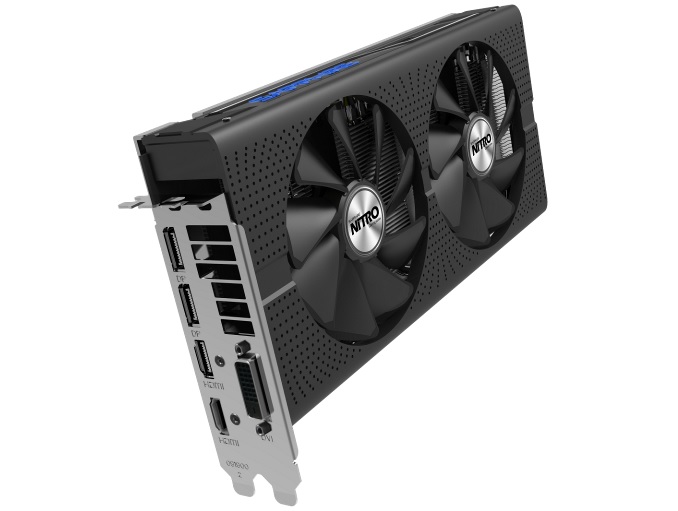
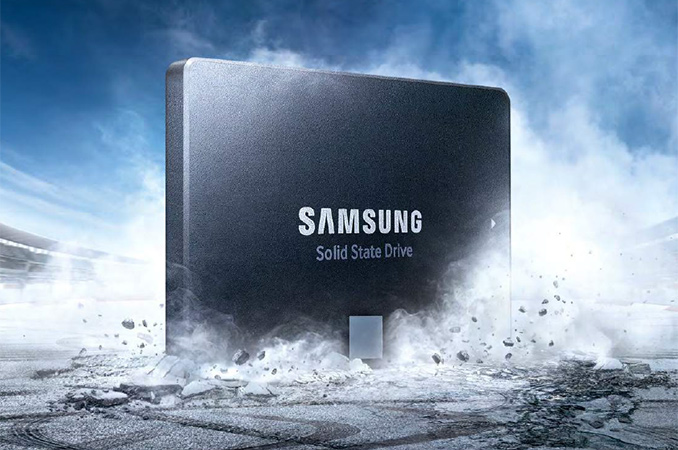
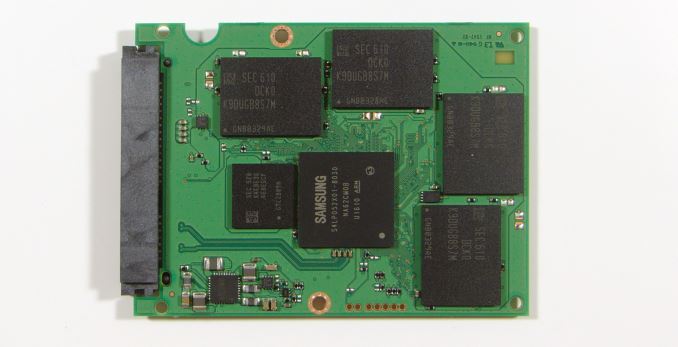



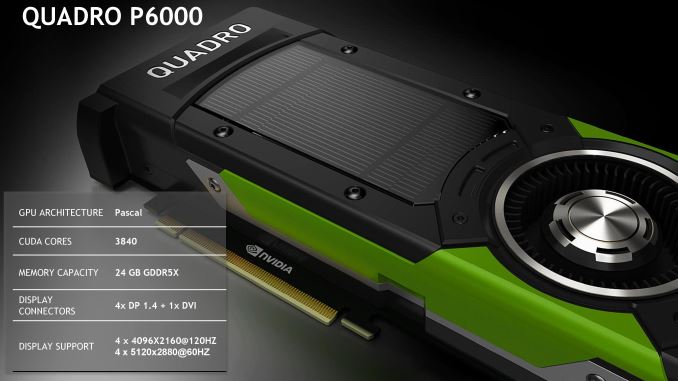

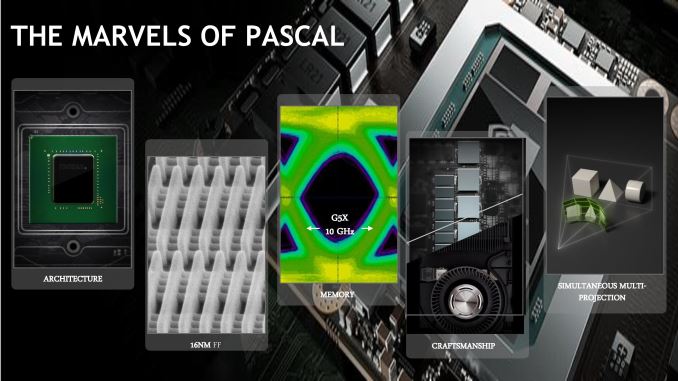
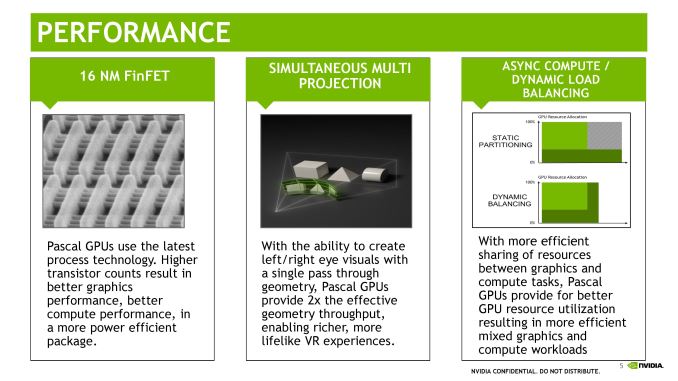
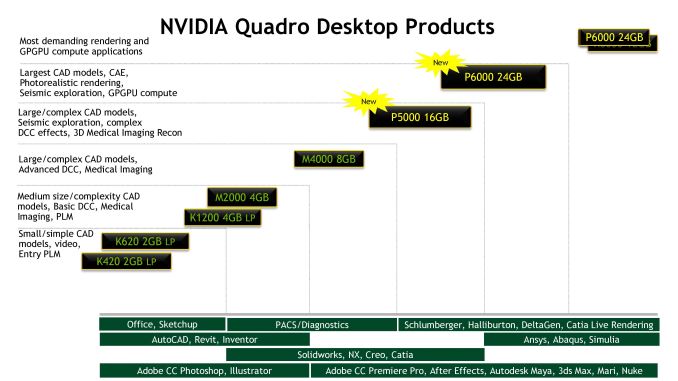
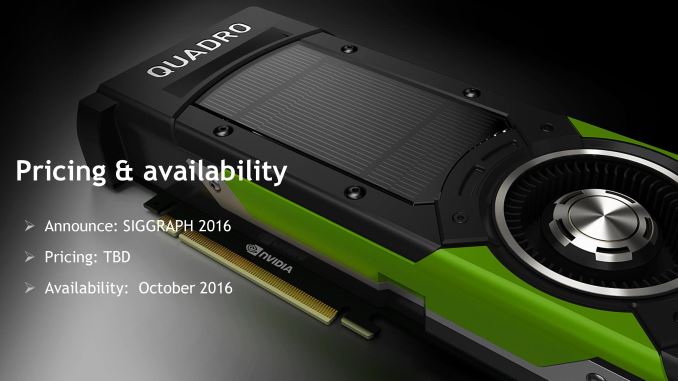
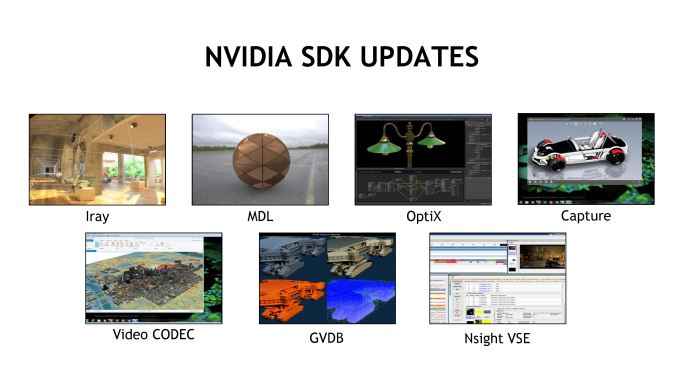
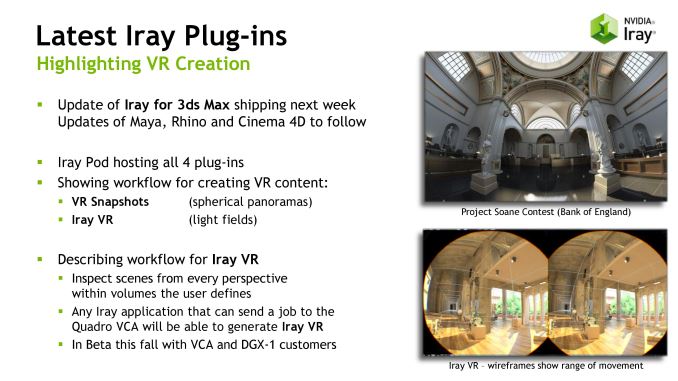
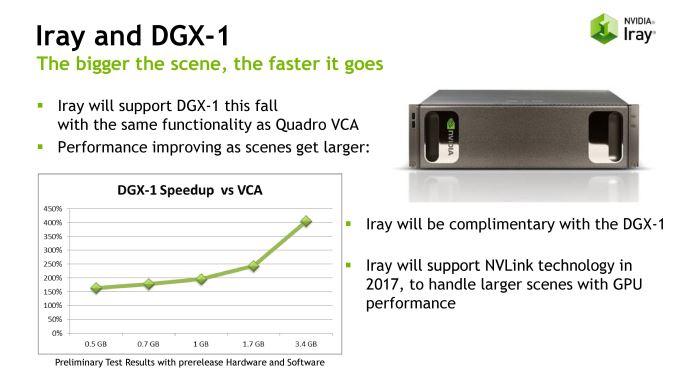
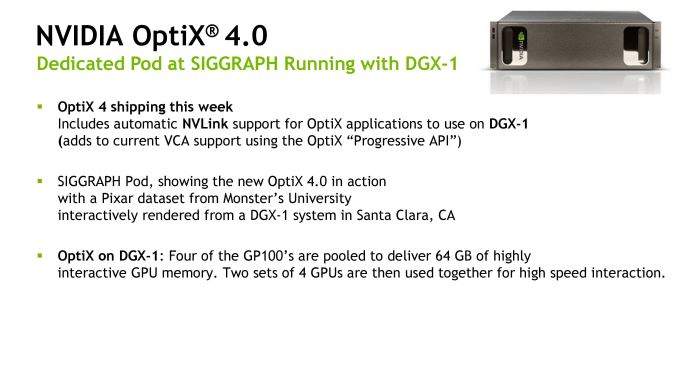
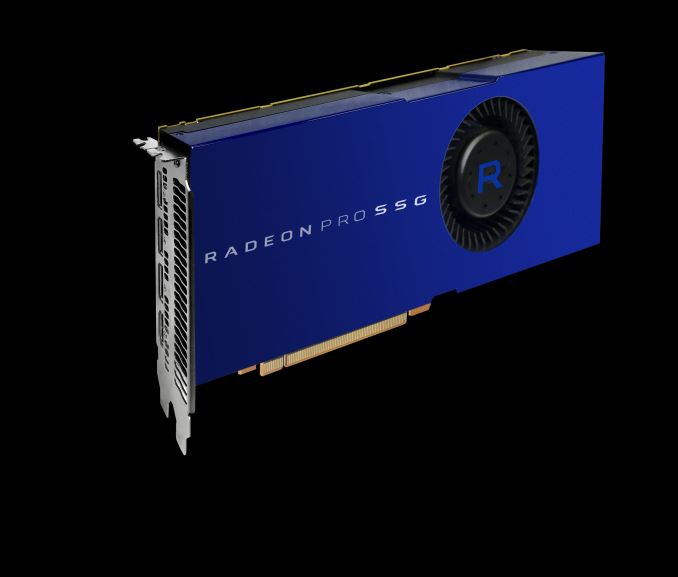


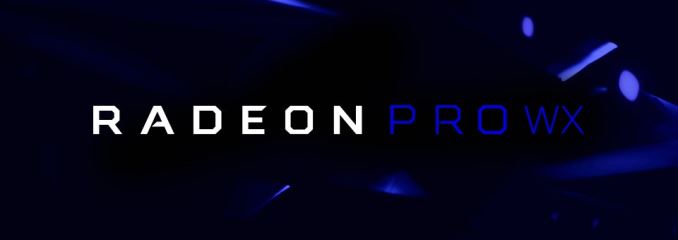
















Bookmarks